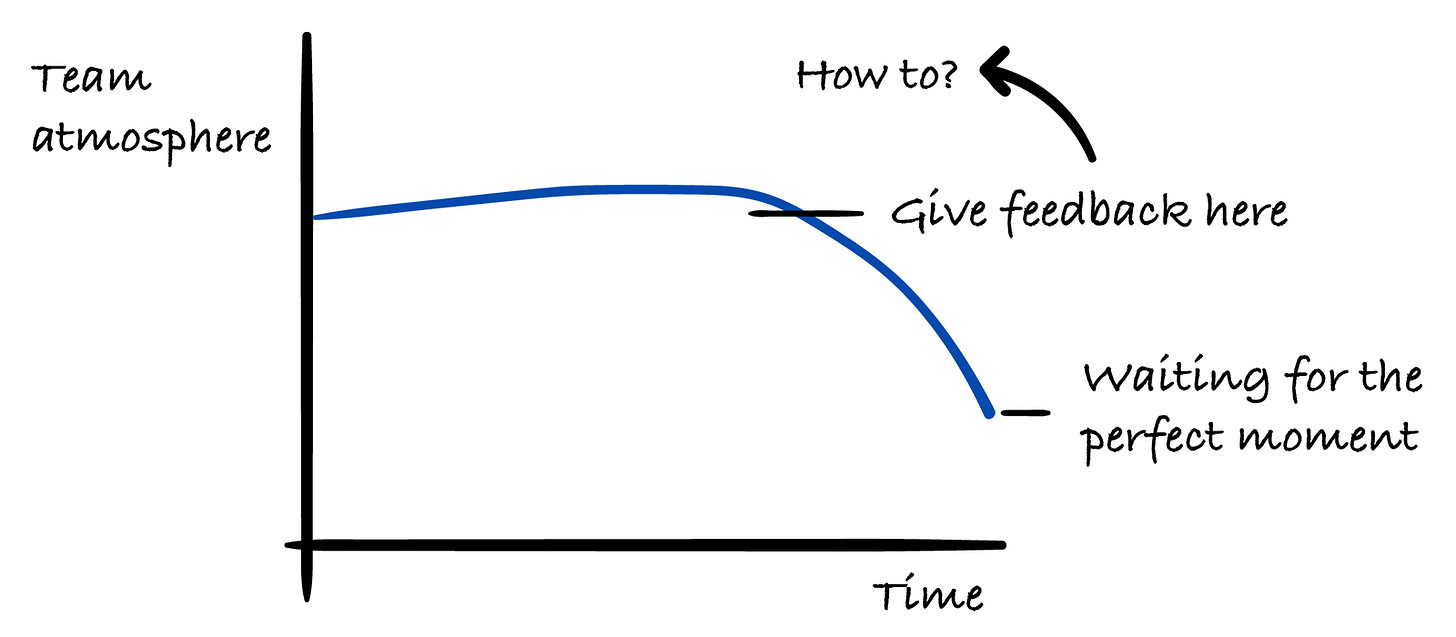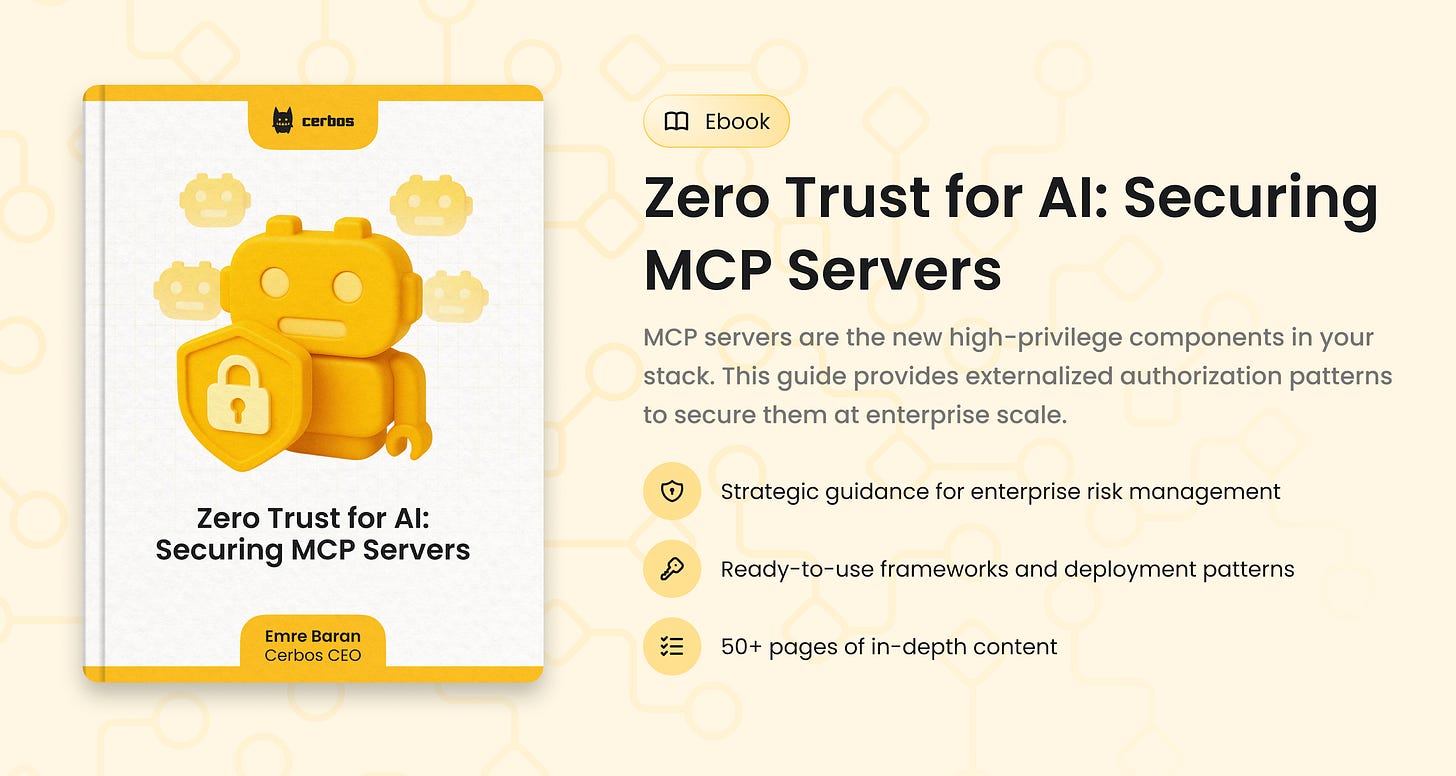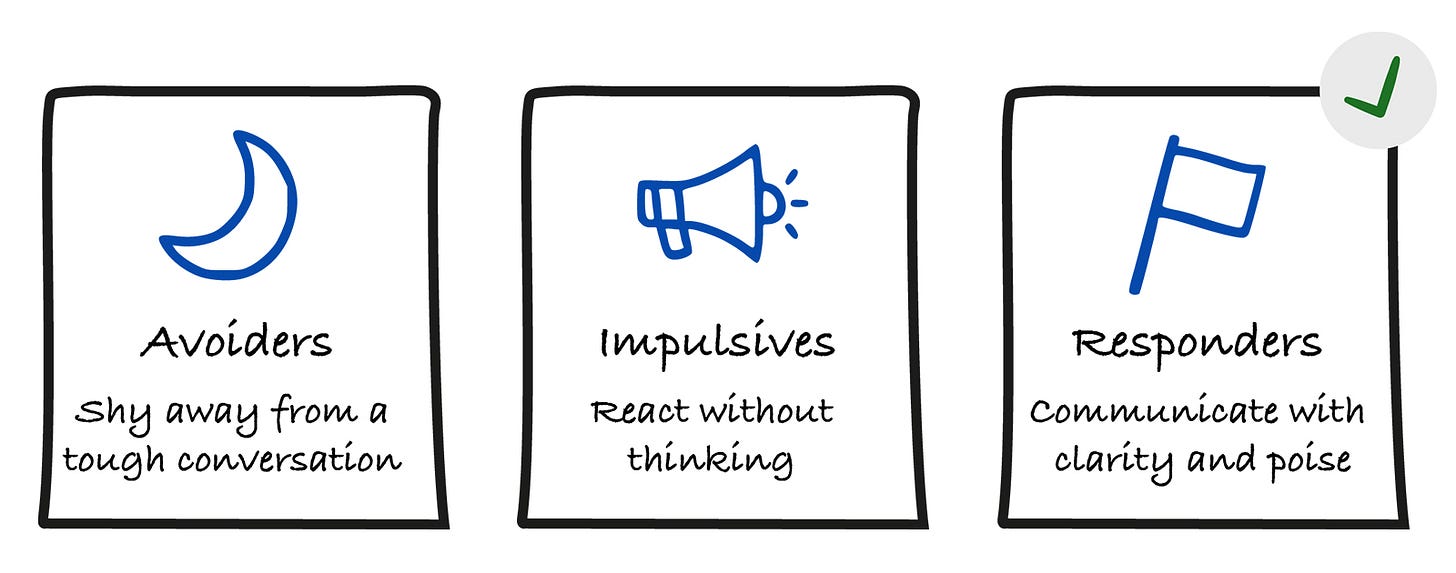How to Give Constructive Feedback with Confidence as an Engineering Leader
Timely and constructive feedback plays a key role in great coaching and mentoring!
This week’s newsletter is sponsored by Cerbos.
“Zero Trust for AI: Securing MCP Servers” eBook
MCP servers are becoming critical components in AI architectures, but they are creating a fundamental new risk that traditional security controls weren’t designed to address.
Left unsecured, they’re a centralized point of failure for data governance.
This eBook will show you how to secure MCP servers properly, using externalized, fine-grained authorization. Inside the ebook you will find:
How MCP servers fit into your broader risk management and compliance framework
Why MCP servers break the traditional chain of identity in enterprise systems
How role-based access control fails in dynamic AI environments
Real incidents from Asana and Supabase that demonstrate these risks
The externalized authorization architecture (PEP/PDP) that enables Zero Trust for AI systems
Get the practical blueprint to secure MCP servers before they become your biggest liability.
Thanks to Cerbos for sponsoring this newsletter, let’s get back to this week’s thought!
Intro
When I first became a manager, I made many mistakes. Not giving feedback on time was one of them. And the reason? Giving feedback felt like a daunting task and I delayed.
That resulted in some unwanted behaviors that could have been avoided by addressing them earlier. After that, I started to give feedback a lot more regularly.
Over time, I developed a habit of consistently giving feedback on every 1:1 meeting. And that has shown to be one of the most effective and important things for coaching and mentoring people in my teams.
So, yes, giving feedback plays a key role in coaching and mentoring!
To help us with how to give feedback effectively, I am happy to bring in Ali Merchant as a guest author for today’s article.
P.S. This article is written more for engineering managers in mind, but a LOT of the advice can be used no matter if you are an Architect, Senior+ Engineer, or any other similar role!
Introducing Ali Merchant
Ali Merchant has spent two decades leading teams and scaling Learning & Development departments for public companies, tech brands, and the world’s largest ad agencies.
Today, he’s the founder of All-In Manager, a leadership development firm that trains and coaches managers to become leaders. Since 2018, Ali has trained thousands of managers and coached hundreds of senior leaders worldwide.
Ali is also the author of “The All-In Manager” → a book he recently published that focuses on teaching you to become a great manager!
Today, he is kindly sharing one of the sections from the book, adapted as part of this article.
You can get the Kindle version of the book for just $1 here for a limited time!
“This is FUBAR!”
That was the exact subject line in my client’s email to me. I had no idea what FUBAR meant. When I Googled it, my heart sank.
“F#@$%D up beyond all recognition.”
I was devastated. That was 20 years ago, and I still think about it.
If you’re like most engineering managers, chances are you’ve also been burned by difficult feedback in the past. Maybe it was a nasty Slack message or PR review from another engineer, an insensitive remark from your manager, or an angry coworker taking their frustration out on you.
It’s no wonder we’ve trained ourselves to avoid feedback any chance we get. We don’t feel comfortable giving it, and we dread receiving it.
But what if feedback didn’t have to feel this way? What if you had a different relationship with it?
Since 2018, I’ve taught thousands of leaders to give difficult feedback with poise and without the awkwardness.
I know I can help you too.
What is Feedback?
Before you learn how to give constructive feedback, we need to align on what feedback actually means.
“Feedback is helpful information shared timely, kindly, and clearly to influence someone’s behavior.”
That’s it.
If the thought of giving constructive feedback makes you break into a cold sweat, you’re not alone. In a survey of 7,631 managers, 44% of managers agreed that giving feedback was stressful.
I’ve asked hundreds of managers why they’re afraid of giving feedback. Here’s what they tell me:
“I’m afraid to hurt my employees’ feelings.”
“I don’t want my employees to feel dejected.”
“I second guess if it’s ultimately my fault as the leader.”
“I’m afraid of not framing it properly and having it come across wrong.”
If any of these reasons sound familiar, I have good news for you. Your employees want your feedback.
Research shows that 46% of employees say they don’t get enough feedback from their managers. But here’s the key. Employees don’t just want more feedback. They want better feedback.
Employees are tired of vague feedback that does more harm than good. They crave feedback that helps them grow and succeed. And that’s exactly what you’re going to learn today.
Constructive feedback comes in two flavors:
In-the-moment feedback
Behavioral feedback
In-the-moment feedback
In-the-moment feedback is the continuous, everyday input you share with your employees to help them improve. This feedback could be a Slack message, a comment on a doc, PR comment, or a quick 1:1 chat.
It’s important to set the expectation early with your team that you’ll provide constructive feedback regularly. (If you haven’t done this, it’s never too late to set that expectation.)
Here are some examples of in-the-moment feedback:
“The latest release doc could use a little more detail on X. Here’s what I’m thinking… What are your thoughts?”
“When it comes to presenting to the stakeholders, I want you to give a little more context before getting into the details. Let me know how I can help.”
“Good presentation. I really liked how you explained the analysis. I have a quick observation on the Q&A slide. I noticed you didn’t leave a lot of time for Q&A. The client felt a bit rushed. Did you notice?”
Don’t be punitive or nitpicky, be helpful by sharing a specific observation and make it as close to the event as possible.
Behavioral feedback
Behavioral feedback is more nuanced and sensitive than in-the-moment feedback because it addresses personal behavior. The behavior could be a single incident, such as being rude in a meeting, or a pattern, such as consistently shipping late.
When it comes to giving behavioral feedback, most managers tend to shift between three roles:
Avoiders
Impulsives
Responders
These aren’t fixed identities. They’re points along a feedback spectrum.
Avoiders
Instead of directly addressing their employee’s behavior, Avoiders tiptoe around it. They fear that being upfront and honest will upset their employee, so they cling to the hope that things will magically improve on their own. Even when they do give feedback, it’s often watered down or sugar-coated.
The result?
The employee keeps dropping the ball, and Avoiders quietly start to resent them. They vent to peers but rarely tackle the issue head-on with the employee.
Impulsives
Unlike Avoiders, who hesitate to say what they’re thinking, Impulsives shoot from the hip and react without thinking carefully. While their intention is pure, too often their feedback comes across as a generalization or judgment about the receiver’s character.
“You’re always late.”
“You need to be more professional.”
“You always dominate the discussion.”
Clinical psychologist Nick Wignall explains why this type of feedback backfires:
“When you make generalizations about people’s character or personality as a whole, it feels like an attack. Which leads them to get defensive and you to get even more frustrated and upset…When you need to be critical, remember to focus on a person’s specific behaviors rather than traits, character, or personality.”
Responders:
Responders don’t avoid conflict nor react impulsively. They practice doing three things well:
They stay grounded: They manage their emotions before giving feedback.
They stay specific: They address the person’s behavior, not their character.
They stay curious: They invite dialogue, not defensiveness.
Whether you’ve been an Avoider or an Impulsive, I’m here to tell you that you can start giving feedback like a Responder. All it takes is five steps:
Find out if your employee is ready for your feedback.
Share why you’re giving them feedback.
Share an observation of their behavior (What?).
Share the impact of their behavior (So what?).
Create alignment and next steps (Now what?).
Now, let’s go through every step in detail next.








